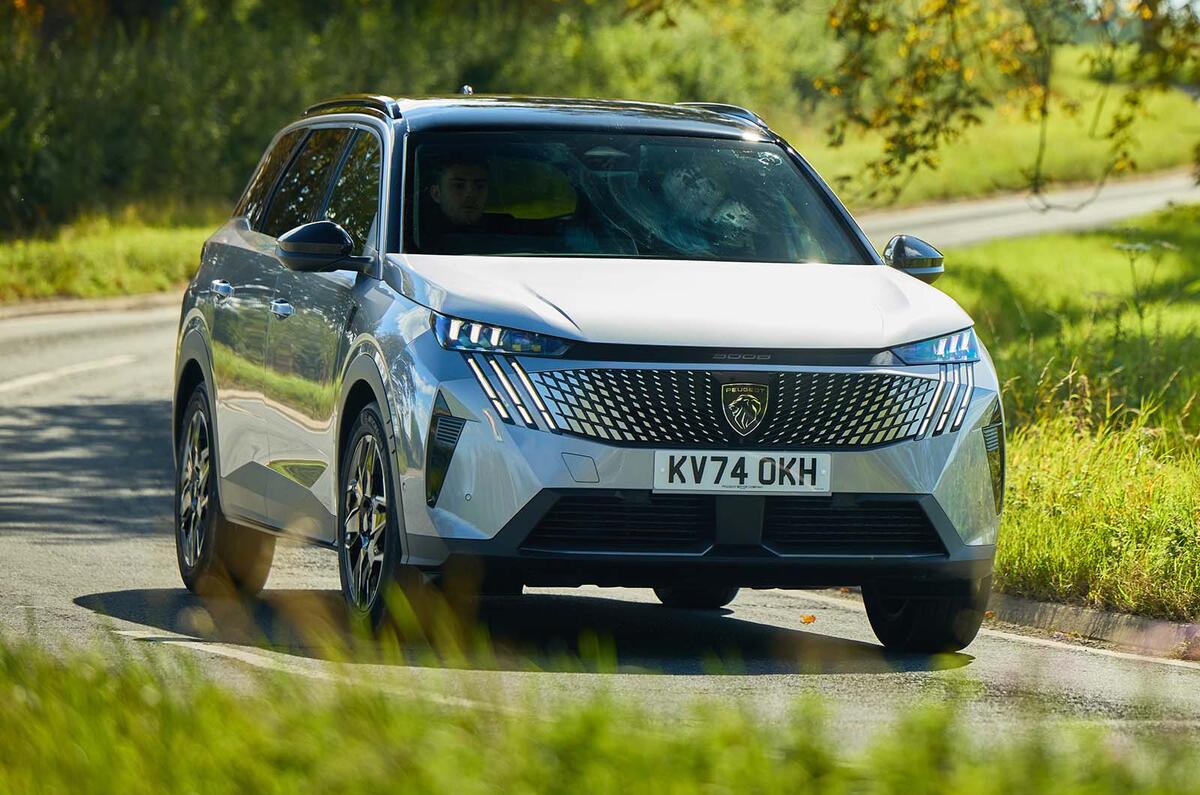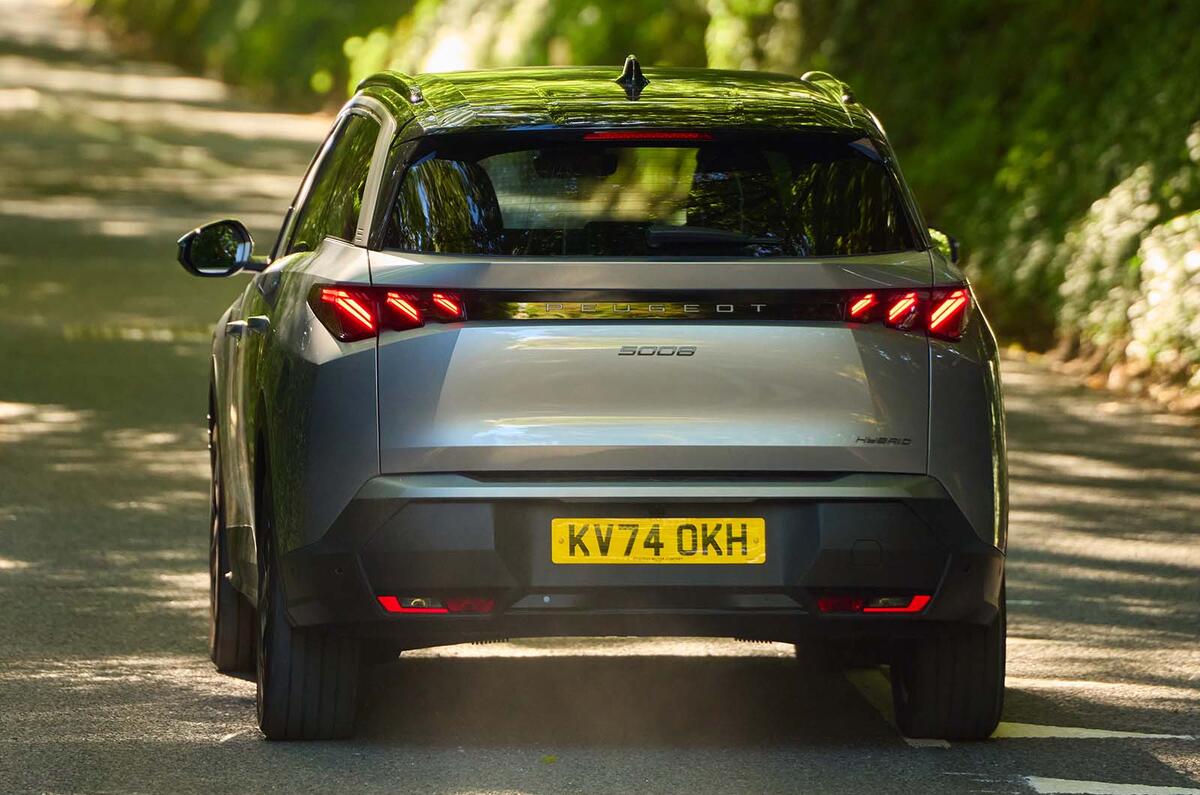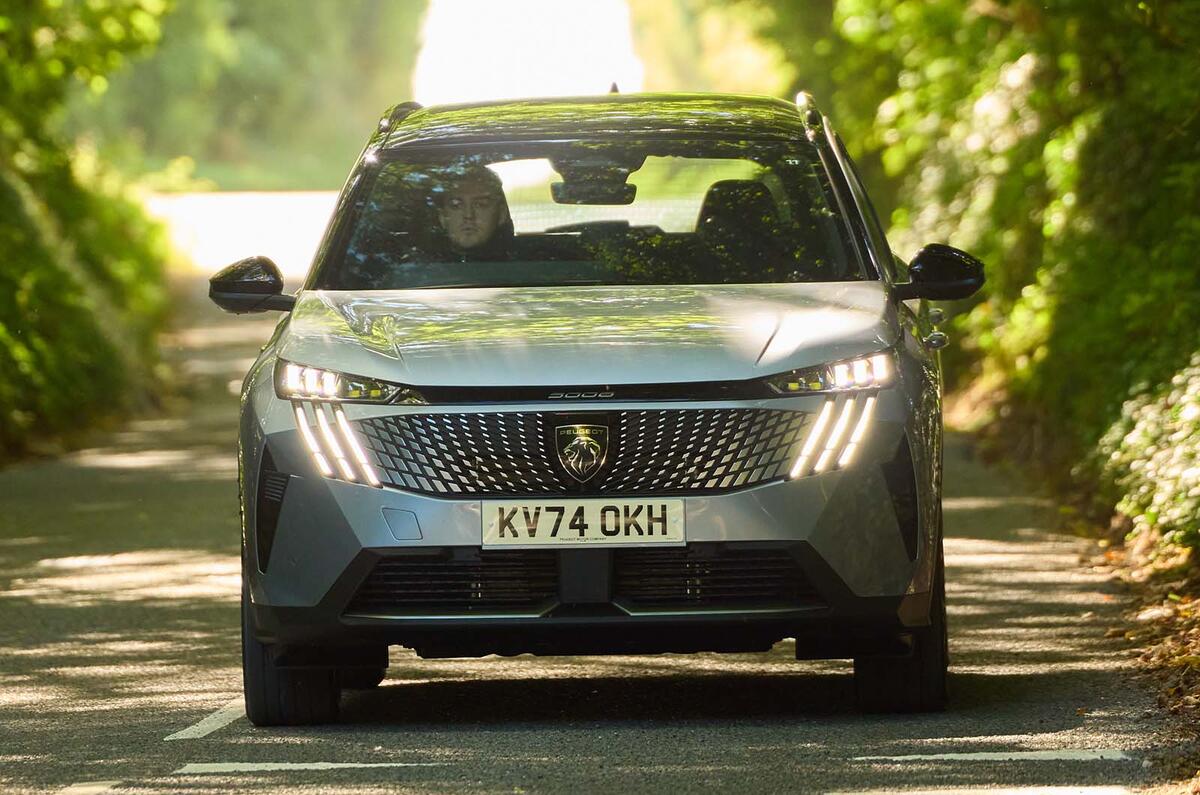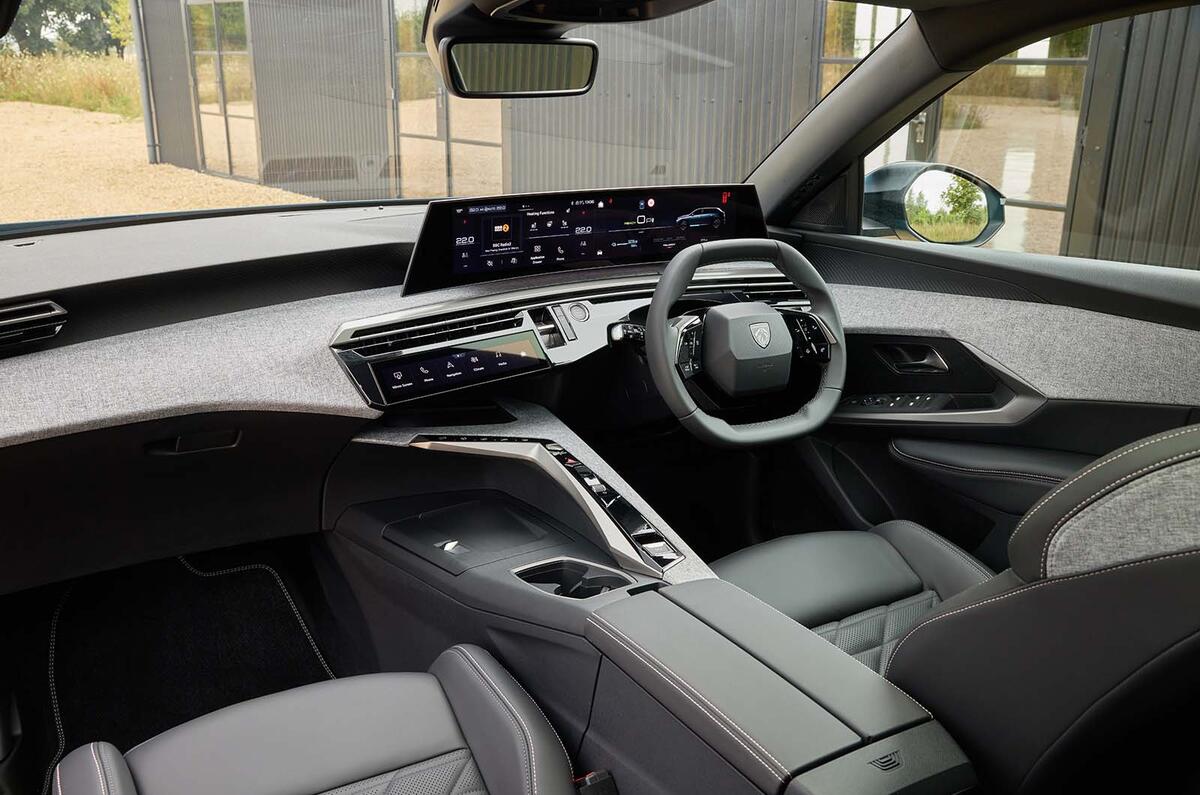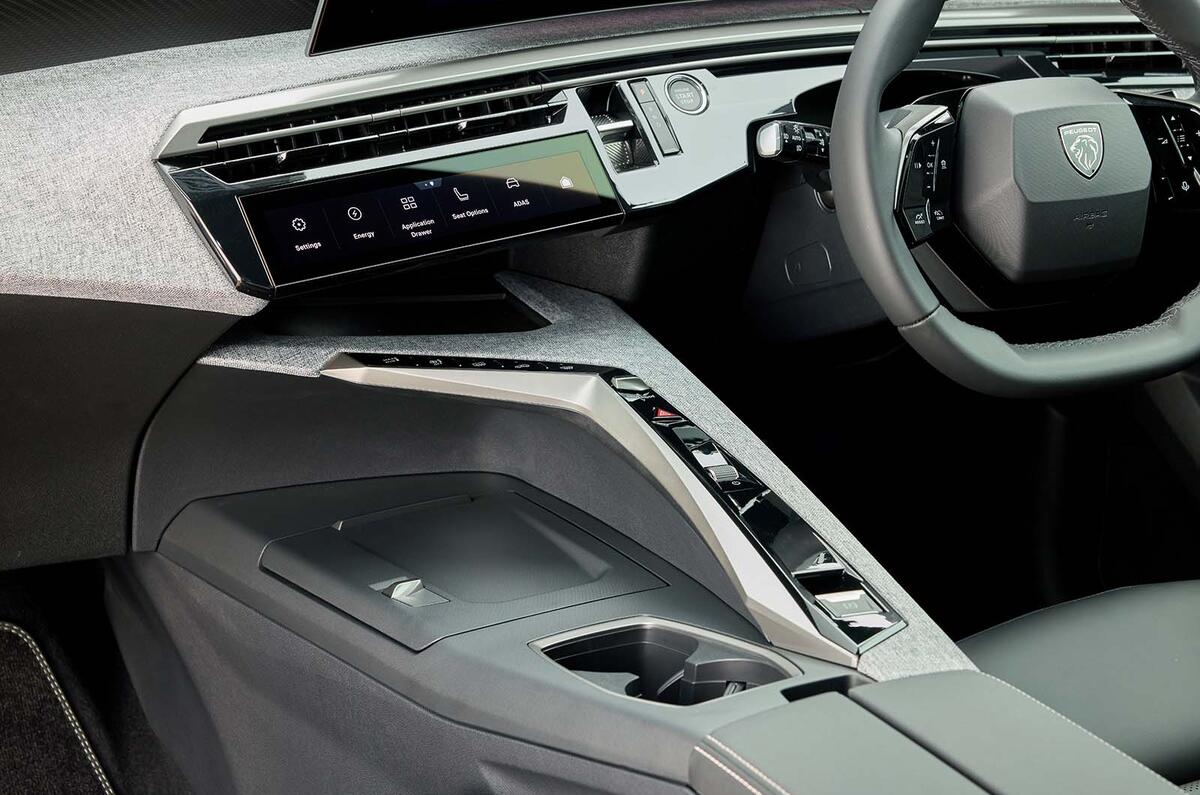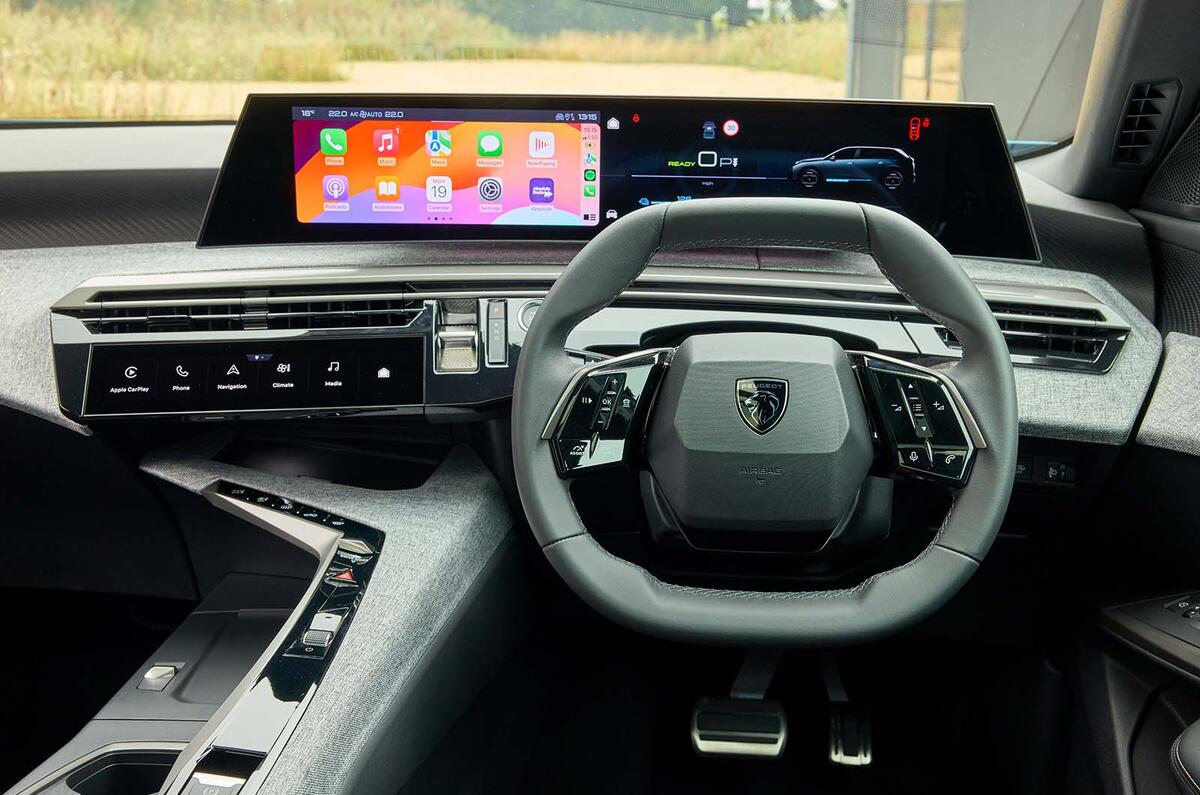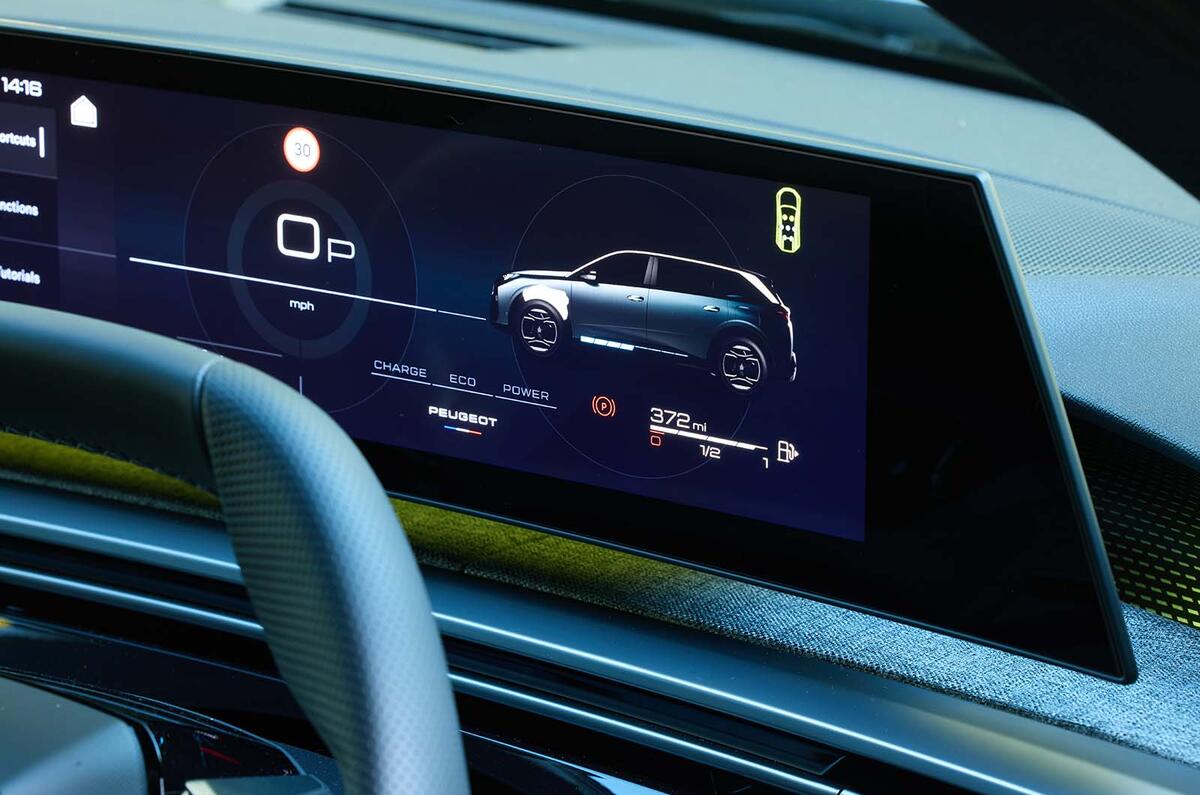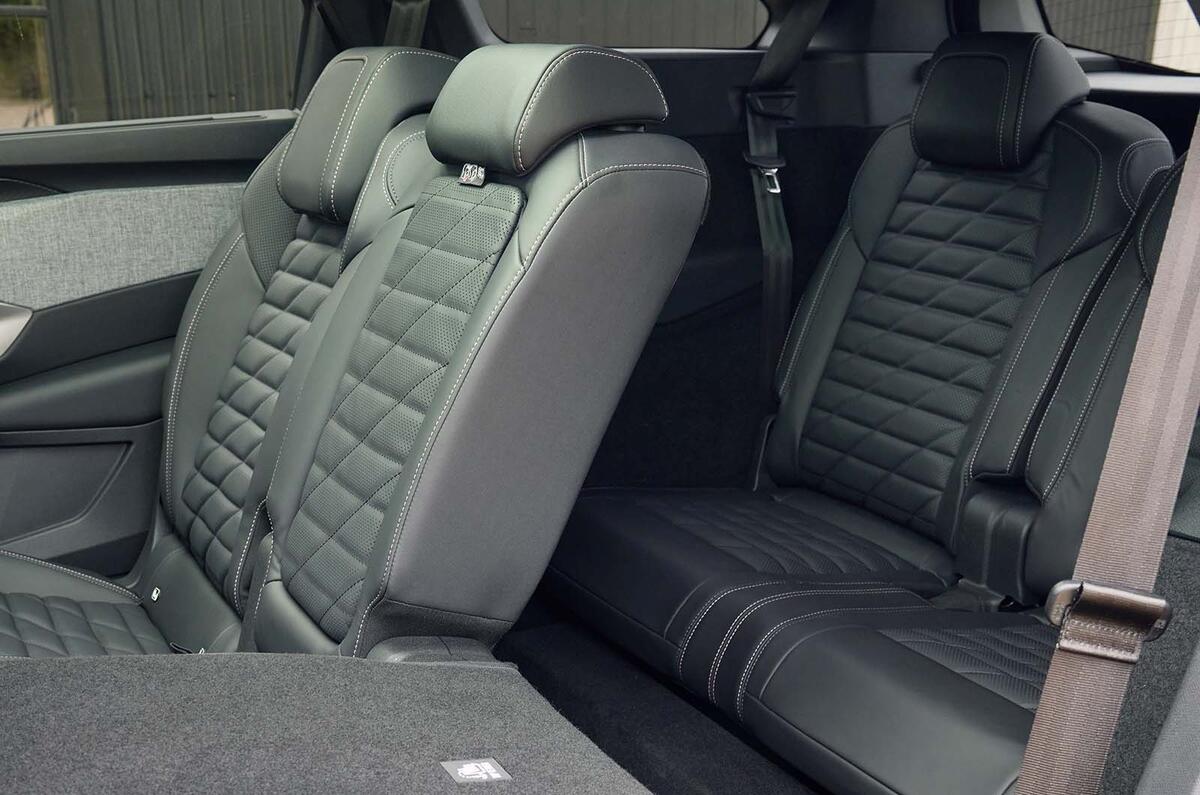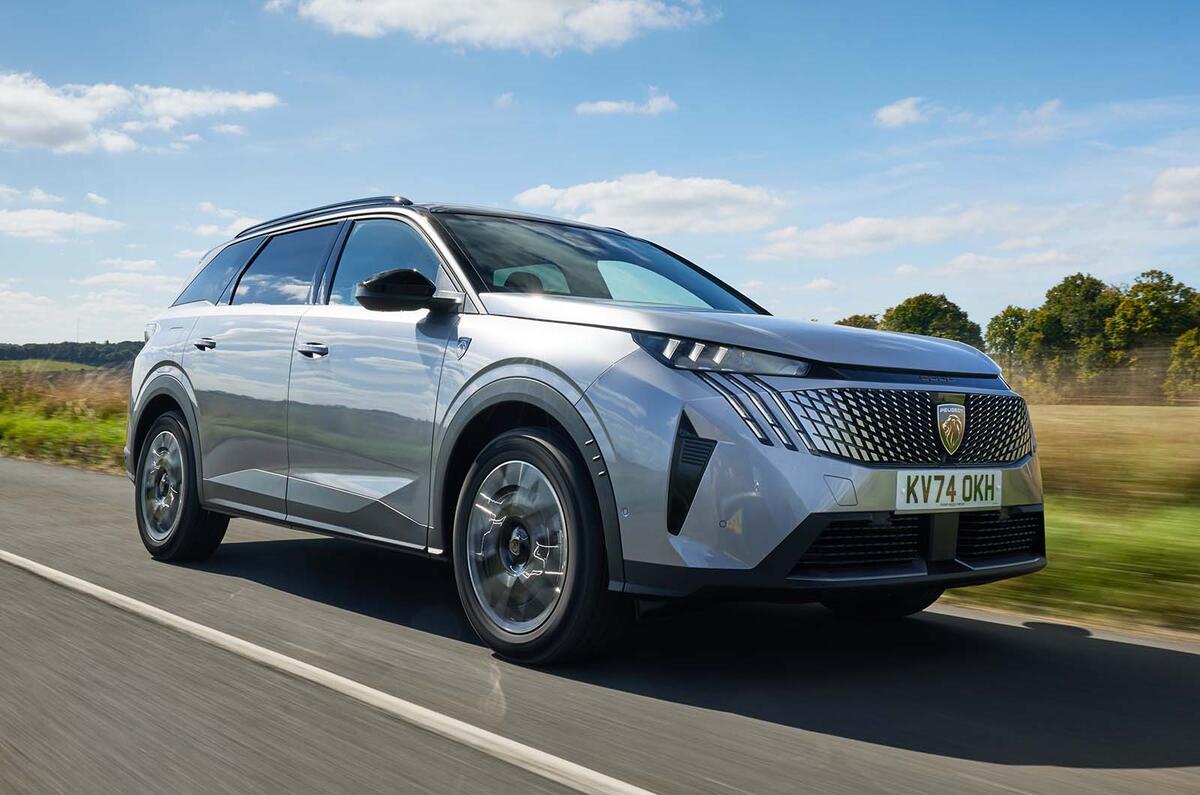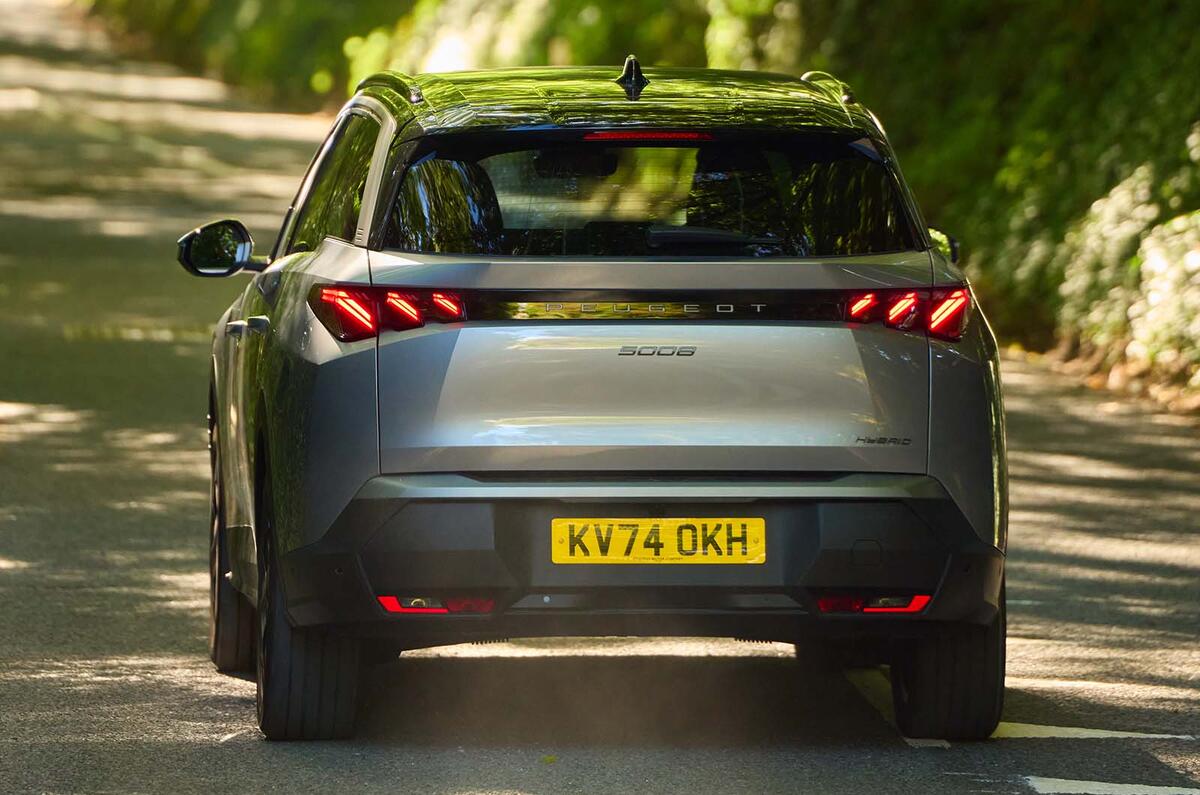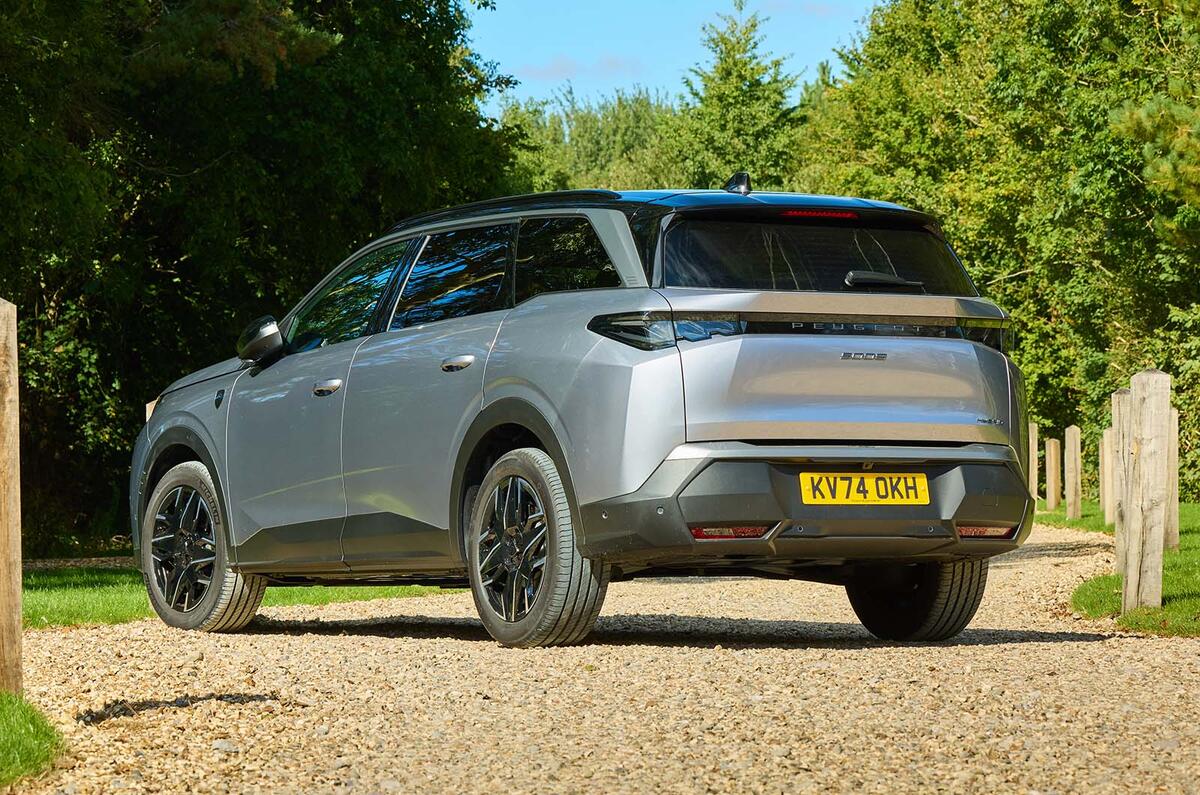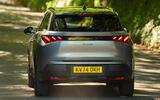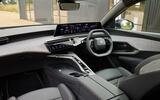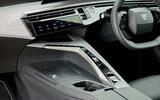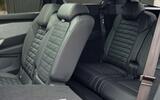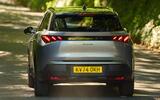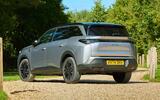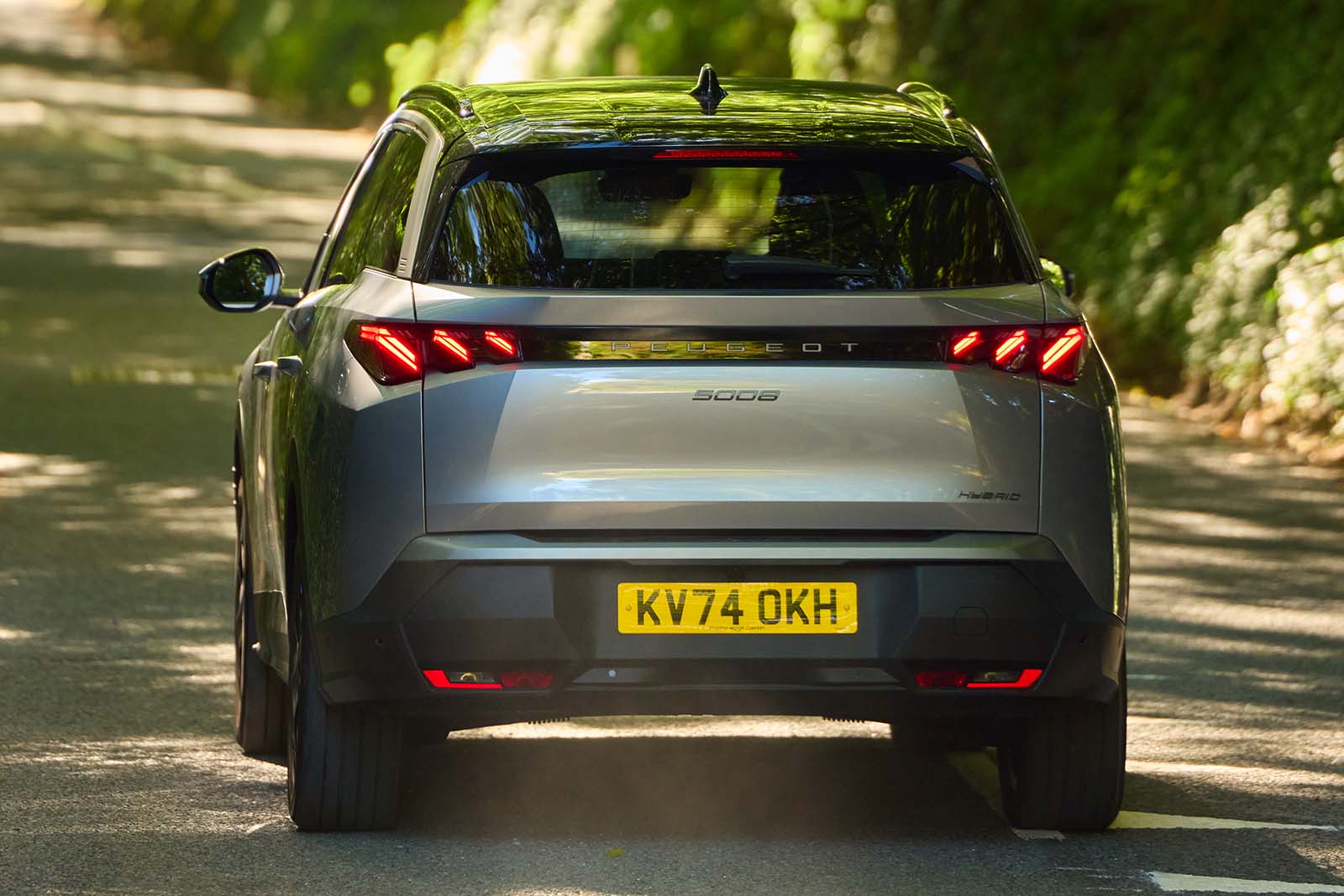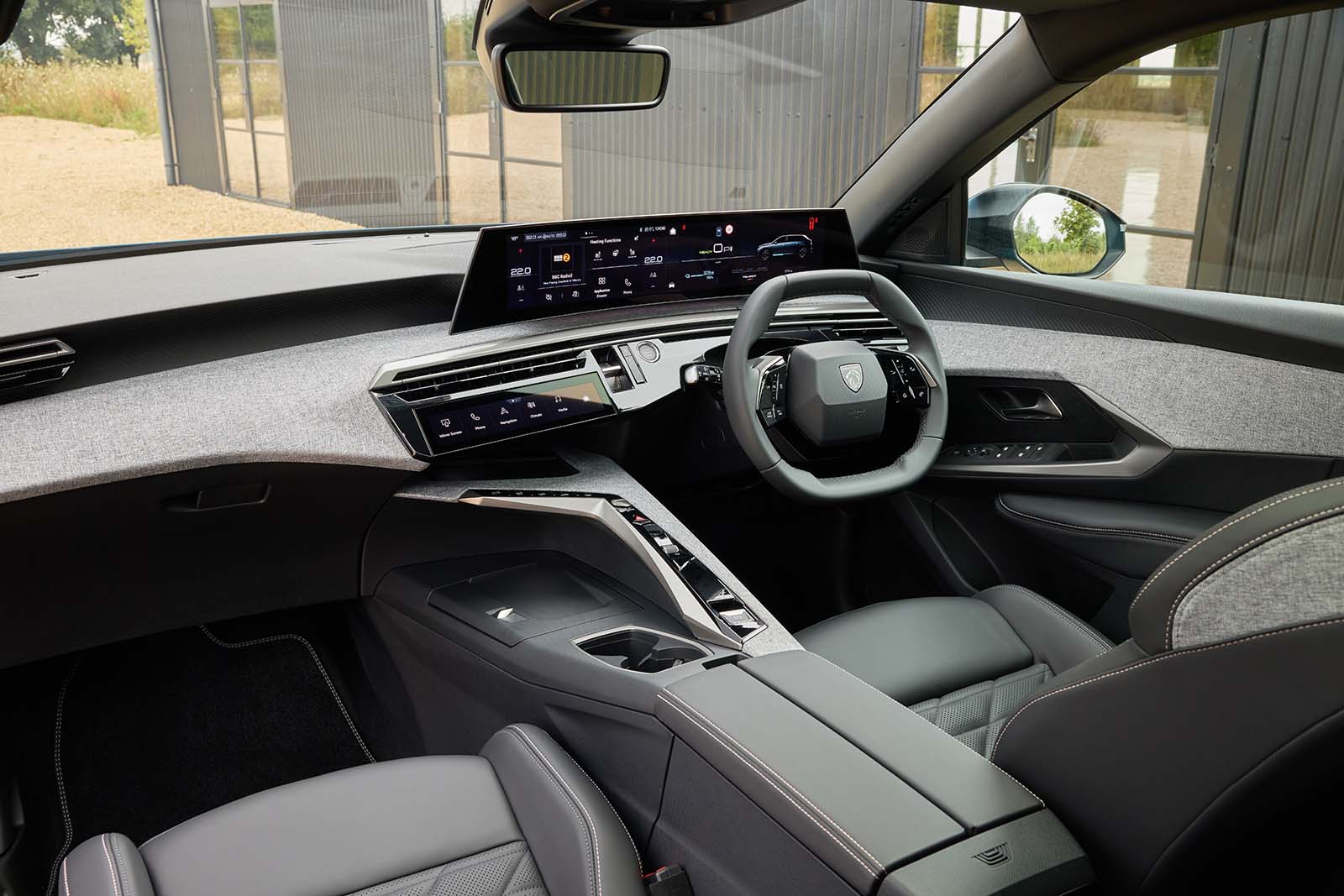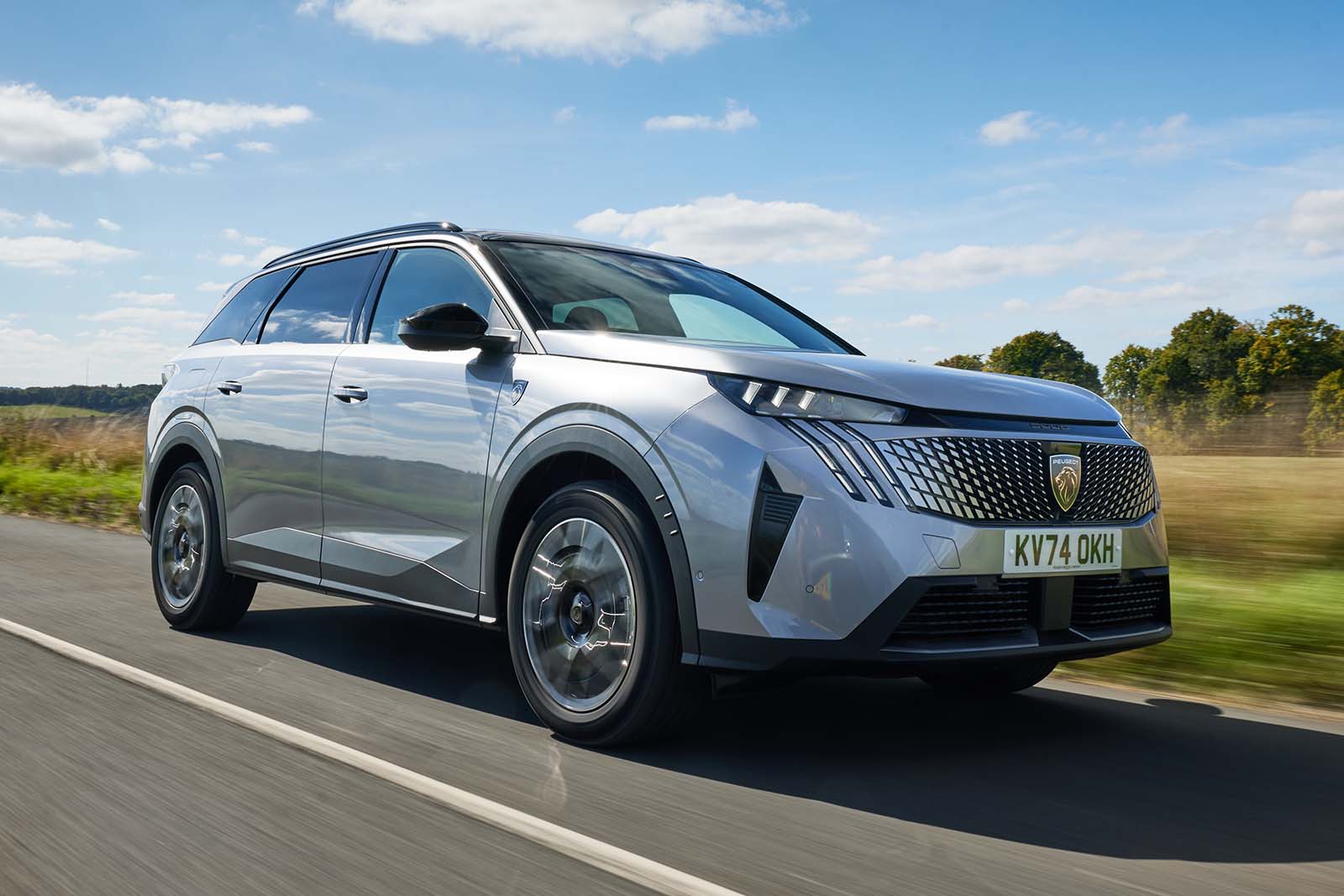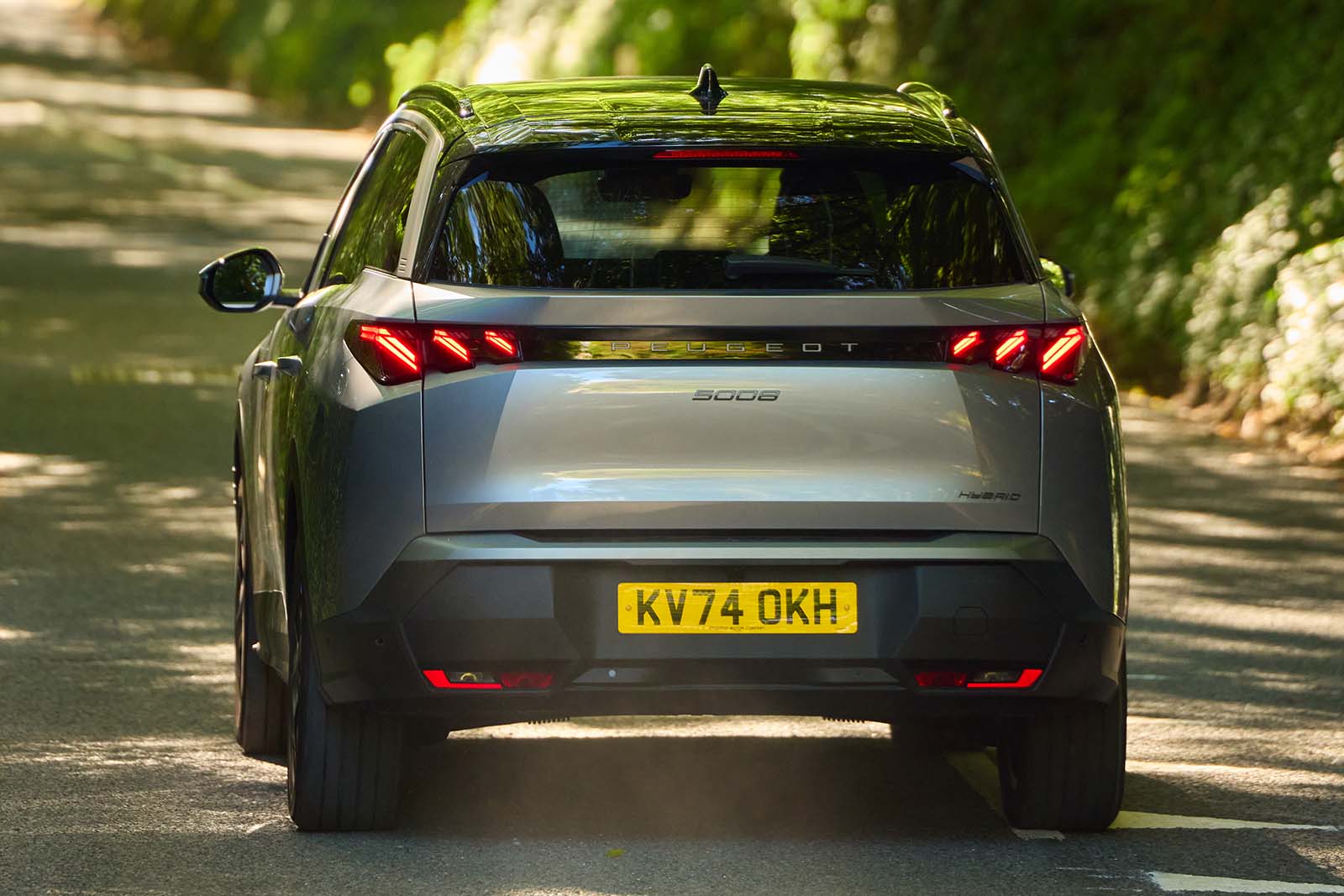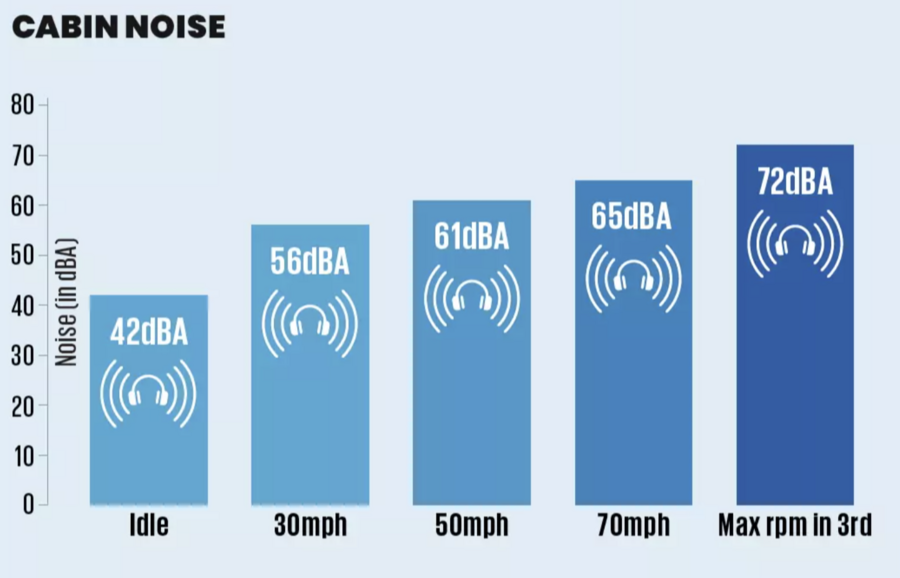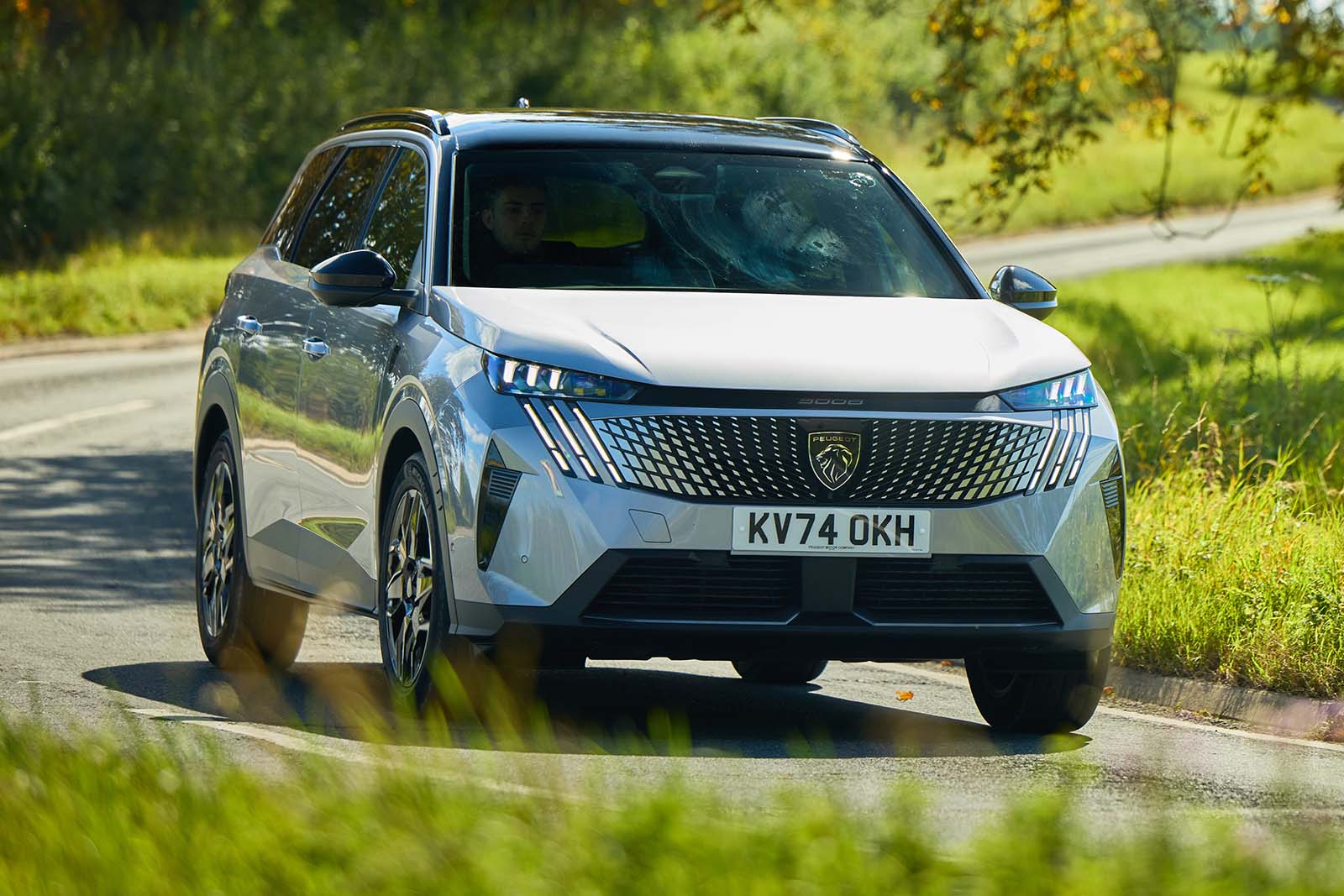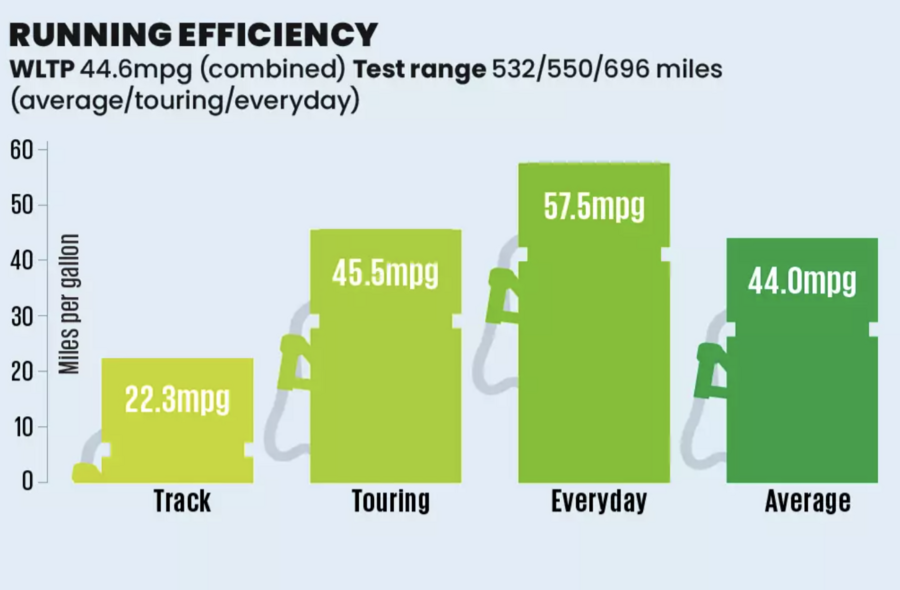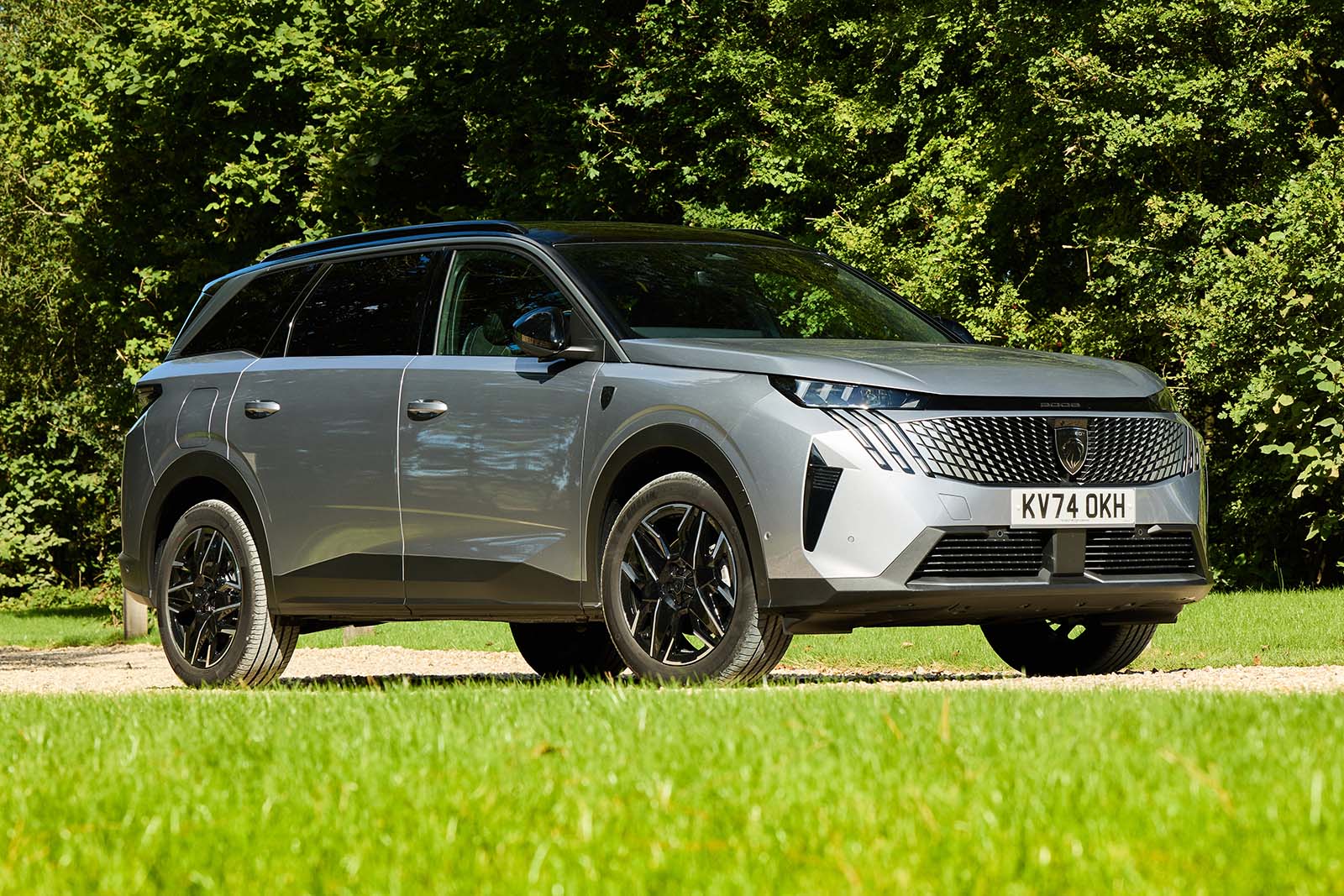Peugeot has gone for a concept car vibe with the 3008 and 5008, and pulls it off. The tiny steering wheel, ‘floating’ widescreen, tall centre console and use of interesting materials and fabrics give these cars a really special ambience.
While the small-diameter, low-set steering wheel remains an acquired taste, it’s better resolved here than in earlier Peugeots because the gauge cluster screen is positioned higher. Taller drivers would be wise to opt for the £1100 leather seats, since this is the only way to get cushion angle adjustment.
However, it is quite a style- before-substance design. There are very few physical buttons, and you’re instead referred to the touchscreen, which can be quite laggy and doesn’t have permanently displayed controls for the climate control. It’s possible to put them on the home screen, but they then disappear when using phone mirroring or the navigation.
You might hope that the ‘i-Toggles’, a bar of user-customisable shortcuts, would be of assistance, but they are quite limited in what they can be programmed to do. Weirdly, adjusting the temperature upwards or downwards by one degree isn’t among the options.
The 5008 also disappoints when judged as an MPV replacement. While the Hyundai Santa Fe has hidden cubbies and shelves everywhere, the 5008 is no better served for cabin storage features. The second row slides and reclines, and can be manually slid and tumbled out of the way quite easily for third-row passengers to get in. It offers 20mm less leg room than the Santa Fe.
Although 785mm is still plenty, it means that there’s less scope for the second row to be slid forwards to give more room to third-row passengers, who have 30mm less leg room than in the Santa Fe with the second row in its rearmost position. They also don’t get the Hyundai’s amenities, such as a USB port or climate vent.
The boot is slightly smaller than in the Hyundai too but it does offer more useful underfloor storage, including space to put the luggage cover when the third row is in use.
Peugeot 5008 infotainment
All 5008s get a 21in curved infotainment and instrumentation display that's generally fine to use, being clear and responsive, if initially a little cluttered with multiple menus and functions.
Apple CarPlay and Android Auto are both fitted as standard if you don't want to use the native software interface.
There's a useful row of shortcut buttons beneath it for important functions such as the sat-nav, air-con, vehicle settings and ADAS settings. But overall, you have to take your eyes off the road for far too long as you're getting used to its functionality.
Elsewhere you get tri-zone climate control, ambient lighting, a reversing camera and interior pre-conditioning, making the 5008 better equipped than many of its rivals.



